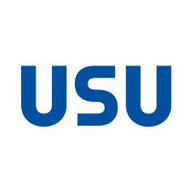 USU Software AG
USU Software AG
 USU Software AG
USU Software AGFinal Q3 in line with est. amid sequential improvements; chg.
Yesterday, USU released a solid set of Q3 results, showing sequential improvements compared to the second quarter despite an ongoing underperformance of license revenues.
Q3 sales increased 4.2% qoq to € 32.9 (eNuW: € 33.3m), implying a muted 1% yoy growth against a tough comparable base. Main drivers were the continuously strong growth in SaaS sales of 15.1% yoy to € 4.3m (eNuW: € 4.6m) as well as the consulting business, which grew 12% yoy to € 20.6m (eNuW: € 20.2m) thanks to the continuing strong demand for digitization services. However, this could not fully compensate for the again weak license sales, which declined 67% yoy to € 1.3m (eNuW: € 1.4m), due to prolonged sales cycles.
On this basis as well as due to continuously increased R&D expenses in connection with the SaaS platform and AI projects, Q3 EBITDA steeply declined by 43% yoy to € 2.5m (eNuW: € 2.9m). Notably, USU introduced an employee stock option program in Q3 following the 2022 share buyback. Although not cash relevant, this marks a specific extraordinary expense under IFRS, which is why management decided to henceforth report an adjusted EBITDA figure. For Q3, adjusted EBITDA amounted to € 2.8m. Going forward, this will also include the newly introduced share program for executives, which is fed by Udo Strehl's personal stock portfolio. As a result, both the company’s FY as well as the mid-term guidance now refer to adjusted EBITDA.
Speaking of which, management confirmed its FY outlook of € 132-139m sales (eNuW: € 133m) and now adjusted EBITDA of € 13-15m (eNuW: € 13.1m). While this looks well achievable on the top-line (+1.6% yoy implied Q4 growth at low end), license sales (eNuW: -50% yoy to € 2.2m) need to pick up the pace in Q4 in order to reach to bottom-line target (12.4% implied Q4 margin at low end).
Overall, the case remains fully intact, in our view. Mind you, that a temporary decline in profitability was always in the cards given the lower initial margin of SaaS contracts compared to license sales (full payment at closing). However, as the annual SaaS payments are seen to equal the one-time license costs (+maintenance) after c. 3 years and SaaS sales showing strong growth (25% CAGR ’21-‘25e), margins are seen strongly expand from 2025e onwards, while 2024e is seen to be another transition year.
BUY, unchanged PT of € 30.00 based on DCF.